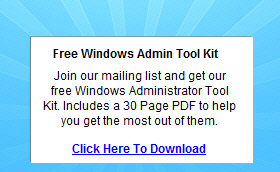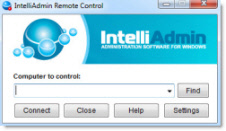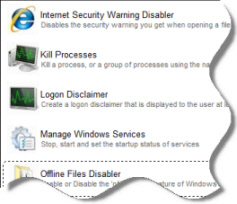Defragmenting Exchange Database Issue
Hello Members,
I inherited an exchange environment that is in a bit of a mess. Exchange database of 250 GB got filled and staredt to dismount. Logical drive is 480 GB in size with 50GB free space. Been running the eseutil /d on database for a few hours now, of which
is really slow. Now about 10% completed after about 5 hours. With the above info., do you guys foresee this defrag completing successfully? If not what is the next step. Thanks in advance.
D
July 14th, 2012 9:23pm
If it Exchange 2003 defrag Take 5 GB per hour
Exchange 2007 defrag takes 5 to 7 GB per hour
Exchange 2010 - No defrag should be ran
--
Whats your Exchange Version ? ,,
if you looking only to reduce the DB size. there is not next step. just mount it back
---Satheshwaran Manoharan | Exchange 2003/2007/2010 | Blog:http://www.careexchange.in | Please mark it as an answer if it really helps you
Free Windows Admin Tool Kit Click here and download it now
July 14th, 2012 11:05pm
Thank you for the speedy response Satheshwaran. It's Exchange 2007. Can you clarify if the logical disk size being that small would cause the defrag to fail? If the defrag does not complete successfully, what's the next step?
D
July 14th, 2012 11:26pm
Hi,
It's impossible to tell how long an Offline Defrag will take (it very much dependes on the hardware) but you should know that it's not recommended to run one.
IF you decide to run one anyway, you must have free disk space that is at least 110% the size of the database
that you want to process on the local disk for the new defrag file that is created. It's also possible to let the defrag create the temporary file on a network share that has the required free space available, but as I guess you can imagine that will
not make the process run faster.
Did you check how much white/free space your database has, before you started?
EventID 1221 in the application will give you an idea.
Maybe it's time to give your server new disks or replace it.
Martina Miskovic
Free Windows Admin Tool Kit Click here and download it now
July 15th, 2012 2:45am
Hi,
It's impossible to tell how long an Offline Defrag will take (it very much dependes on the hardware) but you should know that it's not recommended to run one.
IF you decide to run one anyway, you must have free disk space that is at least 110% the size of the database
that you want to process on the local disk for the new defrag file that is created. It's also possible to let the defrag create the temporary file on a network share that has the required free space available, but as I guess you can imagine that will
not make the process run faster.
Did you check how much white/free space your database has, before you started?
EventID 1221 in the application will give you an idea.
Maybe it's time to give your server new disks or replace it.
Martina Miskovic
July 15th, 2012 3:05am
Hi
If you only had 50GB of when you started this defrag will fail for sure. As Martina said you need 110% of the EDB size free. Do you have other disks in the server that you could use, maybe even one to create a new database on and move the mailboxes
over to?
Steve
ETA: where are the log files stored, is it on the same disk? Are they being truncated properly by your backups?
Free Windows Admin Tool Kit Click here and download it now
July 15th, 2012 4:51am
Steve,
So would the defrag fail at the end (meaning I would have to wait that defrag process out) and secondly, providing that it fail, can I just mount the database back, provision new storage and and move over mailboxr do I need to run any other command before
I mount? Thirdly, creating new storage group on new disk and moving over mailboxes to database on new storage group, would I not need to get the degrag done on the intitial database that I was trying to defrag to reclaim space?
Thanks,
D
July 15th, 2012 7:00am
The defrag process creates a temporary EDB file and copies data over to it, the original EDB is not touched until the process completes successfully, so you can remount that file without any additional steps should the process fail.
The idea behind moving to new storage/database would be to move all of your mailboxes and then delete the original file.
Did you find out how much white space you had, event 1221?
Free Windows Admin Tool Kit Click here and download it now
July 15th, 2012 10:32am
Stave,
Thank you so much for your help. I should be at the office in a few hour and would check the white space. I figure there is quite a few GB to gain since a few mailboxes were migrated to another storage group as well as there was a company wide clean
up of mailboxes of late.
If I understand you correct, provision a new disk, create storage group with database, move mailboxes from first storage group database (filled database), then delete first storage group database (original)?
July 15th, 2012 11:19am
If it Exchange 2003 defrag Take 5 GB per hour
Exchange 2007 defrag takes 5 to 7 GB per hour
Exchange 2010 - No defrag should be ran
--
Whats your Exchange Version ? ,,
if you looking only to reduce the DB size. there is not next step. just mount it back
---
Satheshwaran Manoharan | Exchange 2003/2007/2010 | Blog:http://www.careexchange.in | Please mark it as an answer if it really helps you
There was never any reason to a defrag in 2007 or 2003 either. Or at least very little reasons to do this.
Free Windows Admin Tool Kit Click here and download it now
July 15th, 2012 11:37am
Note that its not 110% of the edb size. Its 110% of the actual logical database size. i.e, the store size on disk minus the white space.
July 15th, 2012 11:37am
Stave,
Thank you so much for your help. I should be at the office in a few hour and would check the white space. I figure there is quite a few GB to gain since a few mailboxes were migrated to another storage group as well as there was a company wide clean
up of mailboxes of late.
If I understand you correct, provision a new disk, create storage group with database, move mailboxes from first storage group database (filled database), then delete first storage group database (original)?
If the original database has the System Attendant mailbox for that server, you will need to restart the System Attendant service once the original store is deleted to recreate it on a new store for that server. Dont attempt to move the SA mailbox.
Free Windows Admin Tool Kit Click here and download it now
July 15th, 2012 11:41am
AD,
Thank you I get your point. But if I am going to move mailboxes to new database, there would not be any need for me to defrag any database. Correct?
D
July 15th, 2012 12:03pm
AD,
Thank you I get your point. But if I am going to move mailboxes to new database, there would not be any need for me to defrag any database. Correct?
D
Exactly!
Free Windows Admin Tool Kit Click here and download it now
July 15th, 2012 1:01pm
On Sun, 15 Jul 2012 16:03:41 +0000, donald_123 wrote:
>
>
>AD,
>
>Thank you I get your point. But if I am going to move mailboxes to new database, there would not be any need for me to defrag any database. Correct?
That's correct. And, as an added bonus, the duration of any "mailbox
unavailability" is limited to the mailboxes being moved, not to the
entire database's worth of mailboxes while the eseutil works on the
database defrag (which can take many hours).
If you ever do run eseutil to defrag a database don't forget to run
isinteg against the new database. That'll clean up any problems within
the folder structure, attachment table, etc. It also adds hours to the
time the database is offline.
---
Rich Matheisen
MCSE+I, Exchange MVP
--- Rich Matheisen MCSE+I, Exchange MVP
July 15th, 2012 5:14pm
On Sun, 15 Jul 2012 16:03:41 +0000, donald_123 wrote:
>
>
>AD,
>
>Thank you I get your point. But if I am going to move mailboxes to new database, there would not be any need for me to defrag any database. Correct?
That's correct. And, as an added bonus, the duration of any "mailbox
unavailability" is limited to the mailboxes being moved, not to the
entire database's worth of mailboxes while the eseutil works on the
database defrag (which can take many hours).
If you ever do run eseutil to defrag a database don't forget to run
isinteg against the new database. That'll clean up any problems within
the folder structure, attachment table, etc. It also adds hours to the
time the database is offline.
---
Rich Matheisen
MCSE+I, Exchange MVP
--- Rich Matheisen MCSE+I, Exchange MVP
Free Windows Admin Tool Kit Click here and download it now
July 15th, 2012 5:14pm
The length of time required to complete defragmentation depends on how much of the database is empty and not on the size of the database file. For example, defragmenting a 100-gigabyte (GB) database containing 10 GB of data takes about the same time as defragmenting
an 11-GB database containing 10 GB of data.
By default, after defragmentation is complete, the temporary database automatically becomes the new production database, and the original production database file is deleted. The time that defragmentation takes can be significantly reduced if you have as
much free space on the same logical drives as the size of the original database files. In this case, the temporary database can be placed on the same logical drive, and the final copy will complete almost instantly.
We do not recommend that you use a network drive to hold the temporary database. When using a network drive for the temporary database, defragmentation takes longer, and any transient or permanent network error will end the defragmentation process. Because
defragmentation cannot be resumed, you must start over from the beginning.
You only need as much extra logical drive disk space as the final size of the files after defragmentation. Although it is impossible to precisely predict how much disk space will be reclaimed, you should leave a recommended 110 percent
of free disk drive space.
http://technet.microsoft.com/en-us/library/aa997972(v=exchg.80).aspxTerence Yu
TechNet Community Support
July 16th, 2012 1:31am


